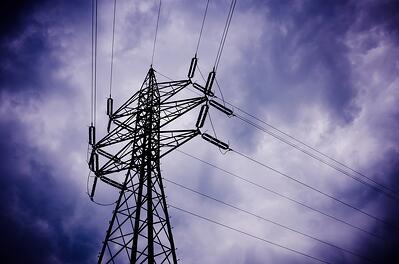
Regulating power and protecting infrastructure are two things that ITW Linx has been perfecting for over 20 years using a combination of innovative engineering and careful consideration. By not only being listed for UL and CSA, but exceeding industry and safety standards, buildings and the electronics that depend on their infrastructure can be future-proofed in regards to surge protection.
In many cases, the devices designed by ITW go beyond their role of surge protection to also protect data throughput, bit corruption and network performance. With the high bandwidth data devices of today, the only way to ensure network performance is to measure and certify compliance for particular applications. Also, in order to develop and certify product performance, Linx has one of the few laboratories in North America that can perform all UL, CSA, FCC, TIA and EIA performance tests for surge protection devices.
Surge Protection & Prevention
Surge Protection devices are used to prevent human injury, structure fires, and equipment damage. Protection devices prevent costly losses in business due to down time, equipment repair / replacement, and building damage. All surge devices are not suited for all applications. The performance requirements for surge protectors are specified by Underwriters Laboratories within the following Listing standards:
● UL 497 - Primary Protection:
The Primary Protector is used at Building Entrances and is capable of withstanding the highest level of over-voltage surges - lightning. These devices are required by NEC Article 800 to protect buildings and humans.
● UL 497A - Secondary Protection:
The Secondary Protector is located between the building entrance / primary protector and the equipment intended to be protected. The Linx Secondary devices add an additional layer of protection over Primary Protectors by including an over-current device to protect from power cross conditions such as touching an AC Power Cable to the telecommunications cable. These protectors are intended to protect buildings, humans and sensitive electronic equipment.
● UL 497B - Isolated Loop Protection:
Isolated Loop Protectors are designed to handle over-voltage events which are introduced within a building. The protected “loop” must not be exposed to the outside world. These protectors are not designed to protect against lightning type surges. Using the proper UL Listed Protection Device for your application will ensure your investment in protection will perform and protect the larger investment made in telecommunications equipment. All UL Listed protection devices must carry the UL Mark. Look for the UL Listing Mark to know you have the proper device for the application - your personnel, business, building and equipment depend on it.
Are Voltage and Current Surges a New Problems?
Transients (surges) in general are not a new phenomena. Surges from lightning, induction, and electrostatic discharge are based in the laws of physics and have been around since the dawn of time. If the surges are not new, why is protection a more recent development and necessity? To answer this question, we must look at the changes in technology causing surges and the devices affected by surges.As a cause, recent problems with power generation have caused increases in the numbers of power outages, brown outs and voltage fluctuations. Newer materials, cabling, and industrial equipment create paths for transients to reach equipment. Newer electronic devices operate at low voltages. When a surge of even a few volts hits these low voltage devices, the device may be exposed to two or more times its normal operating voltage. Thus, the device fails. Phone systems since the 1980’s have migrated from electro-mechanical systems to electronic increasing system sensitivity to surges at every level. Electro-mechanical switching devices can withstand larger changes in voltage without damaging the device. Electronics, however, can be stressed or damaged by very minor changes in voltage. ITW Linx has developed protection devices to specifically protect these newer systems from surge damage.
For more information about ITW Linx and surge protection products, contact your local Accu-Tech representative today, here.


.png?width=58&height=58&name=X_logo_2023_(white).png)
